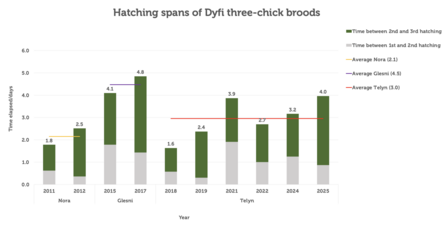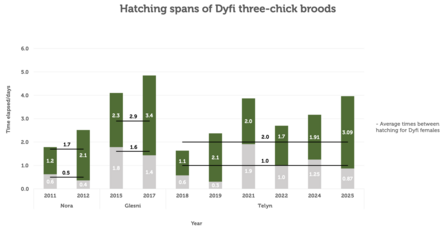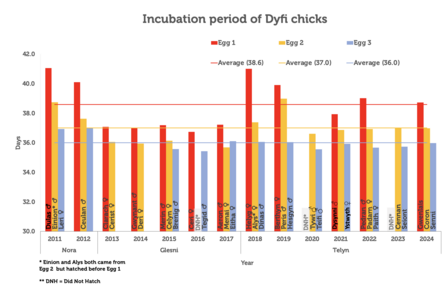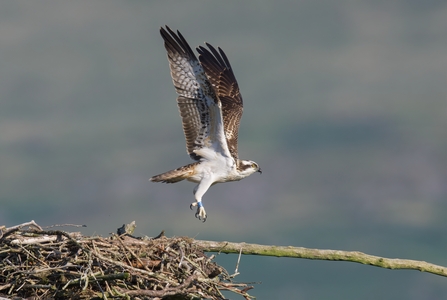This is Telyn's 8th consecutive hat-trick of eggs spanning back to 2018 (the first two with Monty) with all three eggs hatching each year except 2020 and 2023 when one egg failed to hatch (around 10% of all bird's eggs don't hatch for various reasons)
These are the earliest ever eggs/hatchings we've had at the Dyfi nest; here are the hatching dates:
- 🐣 17th May at 16:22 (38.1 days)
- 🐣🐣 18th May at 13:15 (36.0 days)
- 🐣🐣🐣 21st May at 15:29 (36.0 days)
You may remember in the last blog - To Delay or Not Delay - I spoke about Telyn's incubation strategy and the fact that we were pretty sure she did not employ a delayed this year, i.e. a conventional standard strategy..
Well, this is exactly what we saw when it came to hatching, a predictable longer span between three chicks hatching - a whole four days in fact.
Here's chick 3 finally managing to enter the world after a marathon 24-hr egg pip-fest:




